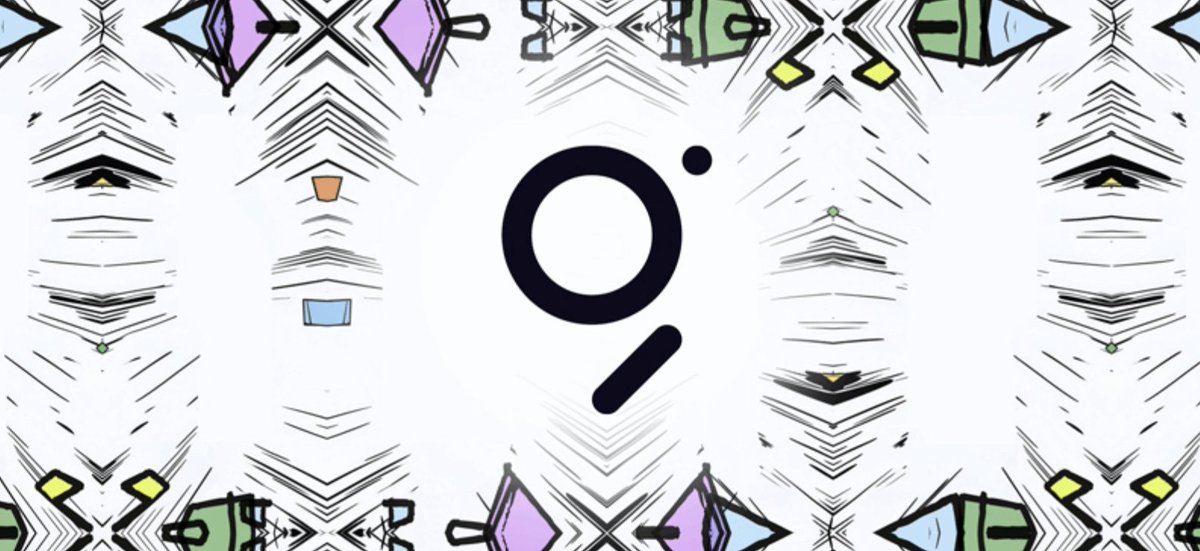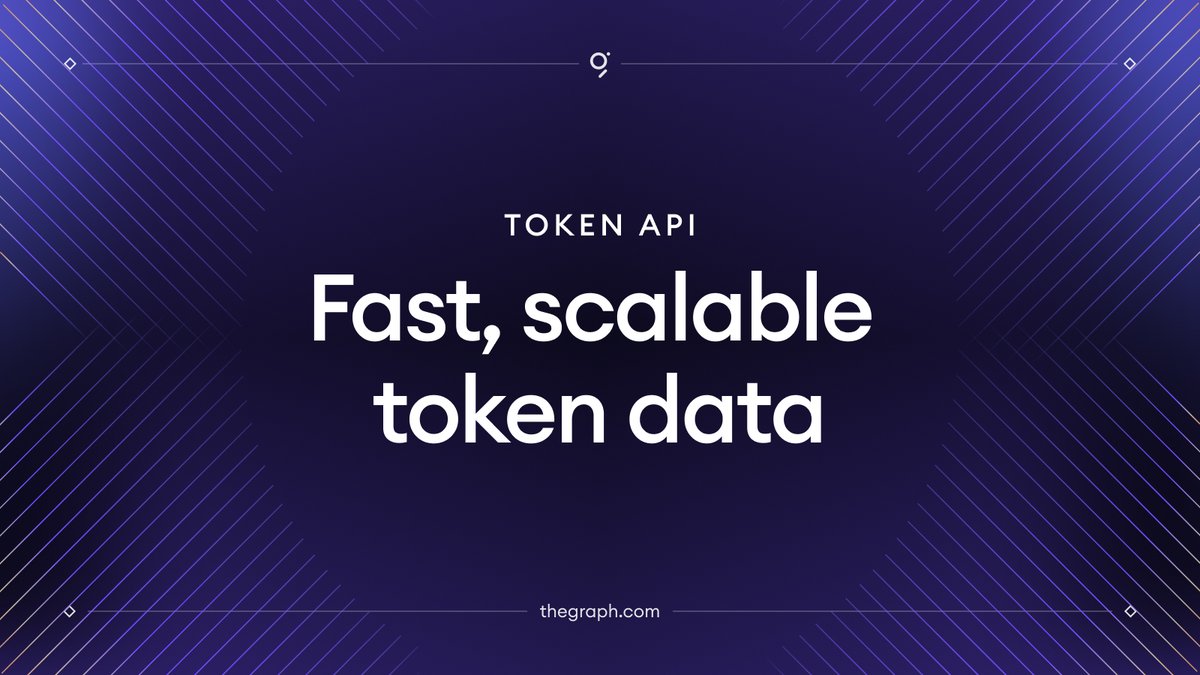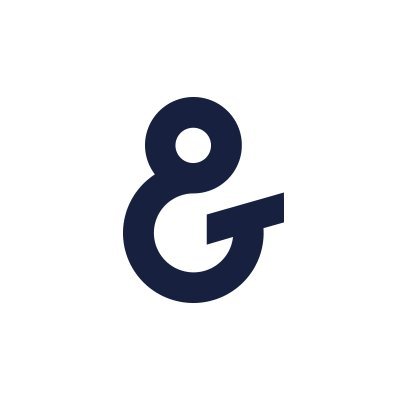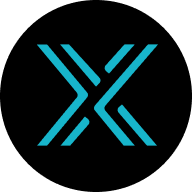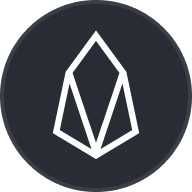
GRT
The Graph hinta
$0,11644
-$0,01131
(−8,86 %)
Hinnanmuutos viimeisen 24 tunnin ajalta

Mitä olet mieltä GRT-rahakkeista tänään?
Jaa tunnelmasi täällä lisäämällä peukku ylös, jos olet optimistinen kolikon suhteen, tai peukku alas, jos olet negatiivinen kolikon suhteen.
Äänestä nähdäksesi tulokset
Vastuuvapauslauseke
Tällä sivulla oleva sosiaalinen sisältö (”sisältö”), mukaan lukien muun muassa LunarCrushin tarjoamat twiitit ja tilastot, on peräisin kolmansilta osapuolilta ja se tarjotaan sellaisenaan vain tiedotustarkoituksiin. OKX ei takaa sisällön laatua tai tarkkuutta, eikä sisältö edusta OKX:n näkemyksiä. Sen tarkoituksena ei ole tarjota (i) sijoitusneuvontaa tai -suositusta, (ii) tarjousta tai kehotusta ostaa, myydä tai pitää hallussa digitaalisia varoja tai (iii) taloudellista, kirjanpidollista, oikeudellista tai veroperusteista neuvontaa. Digitaalisiin varoihin, kuten vakaakolikkoihin ja NFT:ihin, liittyy suuri riski, ja niiden arvo voi vaihdella suuresti. Digitaalisten varojen hintaa ja tuottoa ei ole taattu, ja ne voivat muuttua ilman ennakkoilmoitusta.
OKX ei tarjoa sijoitus- tai omaisuussuosituksia. Sinun on harkittava huolellisesti, sopiiko digitaalisten varojen treidaus tai hallussapito sinulle taloudellisen tilanteesi huomioon ottaen. Ota yhteyttä laki-/vero-/sijoitusalan ammattilaiseen, jos sinulla on kysyttävää omaan tilanteeseesi liittyen. Lisätietoja on käyttöehdoissa ja riskivaroituksessa. Käyttämällä kolmannen osapuolen verkkosivustoa (”TPW”) hyväksyt, että kolmannen osapuolen verkkosivuston käyttöön sovelletaan kolmannen osapuolen verkkosivuston ehtoja. Ellei nimenomaisesti kirjallisesti toisin mainita, OKX ja sen kumppanit (”OKX”) eivät ole millään tavalla yhteydessä kolmannen osapuolen verkkosivuston omistajaan tai operaattoriin. Hyväksyt, että OKX ei ole vastuussa mistään menetyksistä, vahingoista tai muista seurauksista, jotka aiheutuvat kolmannen osapuolen verkkosivuston käytöstäsi. Huomaathan, että kolmannen osapuolen verkkosivun käyttö voi johtaa varojesi menetykseen tai vähenemiseen. Tuote ei välttämättä ole saatavilla kaikilla lainkäyttöalueilla.
OKX ei tarjoa sijoitus- tai omaisuussuosituksia. Sinun on harkittava huolellisesti, sopiiko digitaalisten varojen treidaus tai hallussapito sinulle taloudellisen tilanteesi huomioon ottaen. Ota yhteyttä laki-/vero-/sijoitusalan ammattilaiseen, jos sinulla on kysyttävää omaan tilanteeseesi liittyen. Lisätietoja on käyttöehdoissa ja riskivaroituksessa. Käyttämällä kolmannen osapuolen verkkosivustoa (”TPW”) hyväksyt, että kolmannen osapuolen verkkosivuston käyttöön sovelletaan kolmannen osapuolen verkkosivuston ehtoja. Ellei nimenomaisesti kirjallisesti toisin mainita, OKX ja sen kumppanit (”OKX”) eivät ole millään tavalla yhteydessä kolmannen osapuolen verkkosivuston omistajaan tai operaattoriin. Hyväksyt, että OKX ei ole vastuussa mistään menetyksistä, vahingoista tai muista seurauksista, jotka aiheutuvat kolmannen osapuolen verkkosivuston käytöstäsi. Huomaathan, että kolmannen osapuolen verkkosivun käyttö voi johtaa varojesi menetykseen tai vähenemiseen. Tuote ei välttämättä ole saatavilla kaikilla lainkäyttöalueilla.
The Graph markkinatiedot
Markkina-arvo
Markkina-arvo lasketaan kertomalla kolikon kierrossa oleva tarjonta sen viimeisellä hinnalla.
Markkina-arvo = kierrossa oleva tarjonta × viimeinen hinta
Markkina-arvo = kierrossa oleva tarjonta × viimeinen hinta
Kierrossa oleva tarjonta
Kolikon kokonaissumma, joka on julkisesti saatavilla markkinoilla.
Markkina-arvorankkaus
Kolikon sijoittuminen markkina-arvon mukaan.
Kaikkien aikojen korkein
Korkein hinta, jonka kolikko on saavuttanut treidaushistoriansa aikana.
Kaikkien aikojen alhaisin
Alin hinta, jonka kolikko on saavuttanut treidaushistoriansa aikana.
Markkina-arvo
$1,10B
Kierrossa oleva tarjonta
9 548 531 509 GRT
88,51 % /
10 788 004 319 GRT
Markkina-arvorankkaus
--
Auditoinnit

Viimeisin auditointi: --
24 h korkein
$0,12799
24 h matalin
$0,11554
Kaikkien aikojen korkein
$2,8900
−95,98 % (-$2,7736)
Viimeksi päivitetty: 12.2.2021
Kaikkien aikojen alhaisin
$0,051700
+125,22 % (+$0,064740)
Viimeksi päivitetty: 22.11.2022
The Graph-syöte
Seuraava sisältö on peräisin täältä: .
GRT-laskin


The Graph-rahakkeen suoritus valuutassa USD
The Graph-rahakkeiden nykyinen hinta on $0,11644. Kuluneen 24 tunnin aikana The Graph on laski −8,85 %. Sen tämän hetkinen kierrossa oleva tarjonta on 9 548 531 509 GRT ja sen enimmäistarjonta on 10 788 004 319 GRT, joten sen täysin dilutoitu markkina-arvo on $1,10B. Tällä hetkellä The Graph-kolikko on sijalla 0 markkina-arvotaulukossa. The Graph/USD-hinta päivitetään reaaliajassa.
Tänään
-$0,01131
−8,86 %
7 päivää
+$0,019880
+20,58 %
30 päivää
+$0,036770
+46,15 %
3 kuukautta
-$0,02636
−18,46 %
Suositut The Graph muunnokset
Viimeksi päivitetty: 15.05.2025 klo 14.49
| 1 GRT --> USD | 0,11557 $ |
| 1 GRT --> EUR | 0,10324 € |
| 1 GRT --> PHP | 6,4485 PHP |
| 1 GRT --> IDR | 1 912,14 IDR |
| 1 GRT --> GBP | 0,087069 £ |
| 1 GRT --> CAD | 0,16151 CAD |
| 1 GRT --> AED | 0,42449 AED |
| 1 GRT --> VND | 2 996,37 VND |
Lisätietoja: The Graph (GRT)
Arvostelu on OKX:n tarjoamista lähteistä kokoama yhteenlaskettu arvostelu, ja se on tarkoitettu vain tiedoksi. OKX ei takaa arvostelujen laatua tai tarkkuutta. Sen tarkoituksena ei ole tarjota (i) sijoitusneuvontaa tai -suositusta, (ii) tarjousta tai kehotusta ostaa, myydä tai pitää hallussa digitaalisia varoja tai (iii) taloudellista, kirjanpidollista, oikeudellista tai veroperusteista neuvontaa. Digitaalisiin varoihin, kuten vakaakolikkoihin ja NFT:ihin, liittyy suuri riski, niiden arvo voi vaihdella suuresti ja niistä voi jopa tulla arvottomia. Digitaalisten varojen hintaa ja tuottoa ei ole taattu, ja ne voivat muuttua ilman ennakkoilmoitusta. Digitaalisia varojasi ei ole vakuutettu mahdollisten tappioiden varalta. Aiemmat tuotot eivät ole osoitus tulevista tuotoista. OKX ei takaa tuottoa eikä pääoman tai korkojen takaisinsaamista. OKX ei tarjoa sijoitus- tai omaisuussuosituksia. Sinun on harkittava huolellisesti, sopiiko digitaalisten varojen treidaus tai hallussapito sinulle ottaen huomioon taloudellisen tilanteesi. Ota yhteyttä laki-/vero-/sijoitusalan ammattilaiseen, jos sinulla on kysyttävää omaan tilanteeseesi liittyen.
Näytä lisää
- Virallinen verkkosivusto
- White paper
- Github
- Lohkoketjutyökalu
Tietoa kolmansien osapuolten verkkosivustoista
Tietoa kolmansien osapuolten verkkosivustoista
Käyttämällä kolmannen osapuolen verkkosivustoa hyväksyt, että kolmannen osapuolen verkkosivuston käyttöön sovelletaan kolmannen osapuolen verkkosivuston ehtoja. Ellei nimenomaisesti kirjallisesti mainita, OKX ja sen tytäryhtiöt (”OKX”) eivät ole millään tavalla yhteydessä kolmannen osapuolen verkkosivuston omistajaan tai ylläpitäjään. Hyväksyt, että OKX ei ole vastuussa mistään menetyksistä, vahingoista tai muista seurauksista, jotka johtuvat kolmannen osapuolen verkkosivuston käytöstäsi. Huomaa, että kolmannen osapuolen verkkosivuston käyttö voi johtaa varojesi menettämiseen tai vähenemiseen.
The Graph UKK
Kuinka paljon 1 The Graph on arvoltaan tänään?
Tällä hetkellä yksi The Graph on arvoltaan $0,11644. Jos haluat vastauksia ja tietoa The Graph-rahakkeen hintakehityksestä, olet oikeassa paikassa. Tutustu uusimpiin The Graph-kaavioihin ja treidaa vastuullisesti OKX:ssä.
Mikä on kryptovaluutta?
Kryptovaluutat, kuten The Graph, ovat digitaalisia varoja, jotka toimivat lohkoketjuiksi kutsutussa julkisessa pääkirjassa. Lue lisää OKX:ssä tarjottavista kolikoista ja rahakkeista ja niiden eri ominaisuuksista, joihin kuuluvat reaaliaikaiset hinnat ja reaaliaikaiset kaaviot.
Milloin kryptovaluutta keksittiin?
Vuoden 2008 finanssikriisin ansiosta kiinnostus hajautettua rahoitusta kohtaan kasvoi. Bitcoin tarjosi uudenlaisen ratkaisun olemalla turvallinen digitaalinen vara hajautetussa verkossa. Sittemmin on luotu myös monia muita rahakkeita, kuten The Graph.
Nouseeko The Graph-rahakkeiden hinta tänään?
Tutustu The Graph-rahakkeiden hintaennustesivu nähdäksesi tulevien hintojen ennusteet ja määrittääksesi hintatavoitteesi.
ESG-tiedonanto
Kryptovaroja koskevien ESG-säännösten (Environmental, Social ja Governance) tavoitteena on puuttua niiden ympäristövaikutuksiin (esim. energiaintensiivinen louhinta), edistää avoimuutta ja varmistaa eettiset hallintokäytännöt, jotta kryptoala olisi linjassa laajempien kestävyyteen ja yhteiskuntaan liittyvien tavoitteiden kanssa. Näillä säännöksillä kannustetaan noudattamaan standardeja, jotka lieventävät riskejä ja edistävät luottamusta digitaalisiin varoihin.
Varan tiedot
Nimi
OKcoin Europe LTD
Asianomaisen oikeudellisen tahon tunniste
54930069NLWEIGLHXU42
Kryptovaran nimi
Graph Token
Konsensusmekanismi
Graph Token is present on the following networks: arbitrum, ethereum.
Arbitrum is a Layer 2 solution on top of Ethereum that uses Optimistic Rollups to enhance scalability and reduce transaction costs. It assumes that transactions are valid by default and only verifies them if there's a challenge (optimistic): Core Components: • Sequencer: Orders transactions and creates batches for processing. • Bridge: Facilitates asset transfers between Arbitrum and Ethereum. • Fraud Proofs: Protect against invalid transactions through an interactive verification process. Verification Process: 1. Transaction Submission: Users submit transactions to the Arbitrum Sequencer, which orders and batches them. 2. State Commitment: These batches are submitted to Ethereum with a state commitment. 3. Challenge Period: Validators have a specific period to challenge the state if they suspect fraud. 4. Dispute Resolution: If a challenge occurs, the dispute is resolved through an iterative process to identify the fraudulent transaction. The final operation is executed on Ethereum to determine the correct state. 5. Rollback and Penalties: If fraud is proven, the state is rolled back, and the dishonest party is penalized. Security and Efficiency: The combination of the Sequencer, bridge, and interactive fraud proofs ensures that the system remains secure and efficient. By minimizing on-chain data and leveraging off-chain computations, Arbitrum can provide high throughput and low fees.
The Ethereum network uses a Proof-of-Stake Consensus Mechanism to validate new transactions on the blockchain. Core Components 1. Validators: Validators are responsible for proposing and validating new blocks. To become a validator, a user must deposit (stake) 32 ETH into a smart contract. This stake acts as collateral and can be slashed if the validator behaves dishonestly. 2. Beacon Chain: The Beacon Chain is the backbone of Ethereum 2.0. It coordinates the network of validators and manages the consensus protocol. It is responsible for creating new blocks, organizing validators into committees, and implementing the finality of blocks. Consensus Process 1. Block Proposal: Validators are chosen randomly to propose new blocks. This selection is based on a weighted random function (WRF), where the weight is determined by the amount of ETH staked. 2. Attestation: Validators not proposing a block participate in attestation. They attest to the validity of the proposed block by voting for it. Attestations are then aggregated to form a single proof of the block’s validity. 3. Committees: Validators are organized into committees to streamline the validation process. Each committee is responsible for validating blocks within a specific shard or the Beacon Chain itself. This ensures decentralization and security, as a smaller group of validators can quickly reach consensus. 4. Finality: Ethereum 2.0 uses a mechanism called Casper FFG (Friendly Finality Gadget) to achieve finality. Finality means that a block and its transactions are considered irreversible and confirmed. Validators vote on the finality of blocks, and once a supermajority is reached, the block is finalized. 5. Incentives and Penalties: Validators earn rewards for participating in the network, including proposing blocks and attesting to their validity. Conversely, validators can be penalized (slashed) for malicious behavior, such as double-signing or being offline for extended periods. This ensures honest participation and network security.
Kannustinmekanismit ja sovellettavat maksut
Graph Token is present on the following networks: arbitrum, ethereum.
Arbitrum One, a Layer 2 scaling solution for Ethereum, employs several incentive mechanisms to ensure the security and integrity of transactions on its network. The key mechanisms include: 1. Validators and Sequencers: o Sequencers are responsible for ordering transactions and creating batches that are processed off-chain. They play a critical role in maintaining the efficiency and throughput of the network. o Validators monitor the sequencers' actions and ensure that transactions are processed correctly. Validators verify the state transitions and ensure that no invalid transactions are included in the batches. 2. Fraud Proofs: o Assumption of Validity: Transactions processed off-chain are assumed to be valid. This allows for quick transaction finality and high throughput. o Challenge Period: There is a predefined period during which anyone can challenge the validity of a transaction by submitting a fraud proof. This mechanism acts as a deterrent against malicious behavior. o Dispute Resolution: If a challenge is raised, an interactive verification process is initiated to pinpoint the exact step where fraud occurred. If the challenge is valid, the fraudulent transaction is reverted, and the dishonest actor is penalized. 3. Economic Incentives: o Rewards for Honest Behavior: Participants in the network, such as validators and sequencers, are incentivized through rewards for performing their duties honestly and efficiently. These rewards come from transaction fees and potentially other protocol incentives. o Penalties for Malicious Behavior: Participants who engage in dishonest behavior or submit invalid transactions are penalized. This can include slashing of staked tokens or other forms of economic penalties, which serve to discourage malicious actions. Fees on the Arbitrum One Blockchain 1. Transaction Fees: o Layer 2 Fees: Users pay fees for transactions processed on the Layer 2 network. These fees are typically lower than Ethereum mainnet fees due to the reduced computational load on the main chain. o Arbitrum Transaction Fee: A fee is charged for each transaction processed by the sequencer. This fee covers the cost of processing the transaction and ensuring its inclusion in a batch. 2. L1 Data Fees: o Posting Batches to Ethereum: Periodically, the state updates from the Layer 2 transactions are posted to the Ethereum mainnet as calldata. This involves a fee, known as the L1 data fee, which accounts for the gas required to publish these state updates on Ethereum. o Cost Sharing: Because transactions are batched, the fixed costs of posting state updates to Ethereum are spread across multiple transactions, making it more cost-effective for users.
Ethereum, particularly after transitioning to Ethereum 2.0 (Eth2), employs a Proof-of-Stake (PoS) consensus mechanism to secure its network. The incentives for validators and the fee structures play crucial roles in maintaining the security and efficiency of the blockchain. Incentive Mechanisms 1. Staking Rewards: Validator Rewards: Validators are essential to the PoS mechanism. They are responsible for proposing and validating new blocks. To participate, they must stake a minimum of 32 ETH. In return, they earn rewards for their contributions, which are paid out in ETH. These rewards are a combination of newly minted ETH and transaction fees from the blocks they validate. Reward Rate: The reward rate for validators is dynamic and depends on the total amount of ETH staked in the network. The more ETH staked, the lower the individual reward rate, and vice versa. This is designed to balance the network's security and the incentive to participate. 2. Transaction Fees: Base Fee: After the implementation of Ethereum Improvement Proposal (EIP) 1559, the transaction fee model changed to include a base fee that is burned (i.e., removed from circulation). This base fee adjusts dynamically based on network demand, aiming to stabilize transaction fees and reduce volatility. Priority Fee (Tip): Users can also include a priority fee (tip) to incentivize validators to include their transactions more quickly. This fee goes directly to the validators, providing them with an additional incentive to process transactions efficiently. 3. Penalties for Malicious Behavior: Slashing: Validators face penalties (slashing) if they engage in malicious behavior, such as double-signing or validating incorrect information. Slashing results in the loss of a portion of their staked ETH, discouraging bad actors and ensuring that validators act in the network's best interest. Inactivity Penalties: Validators also face penalties for prolonged inactivity. This ensures that validators remain active and engaged in maintaining the network's security and operation. Fees Applicable on the Ethereum Blockchain 1. Gas Fees: Calculation: Gas fees are calculated based on the computational complexity of transactions and smart contract executions. Each operation on the Ethereum Virtual Machine (EVM) has an associated gas cost. Dynamic Adjustment: The base fee introduced by EIP-1559 dynamically adjusts according to network congestion. When demand for block space is high, the base fee increases, and when demand is low, it decreases. 2. Smart Contract Fees: Deployment and Interaction: Deploying a smart contract on Ethereum involves paying gas fees proportional to the contract's complexity and size. Interacting with deployed smart contracts (e.g., executing functions, transferring tokens) also incurs gas fees. Optimizations: Developers are incentivized to optimize their smart contracts to minimize gas usage, making transactions more cost-effective for users. 3. Asset Transfer Fees: Token Transfers: Transferring ERC-20 or other token standards involves gas fees. These fees vary based on the token's contract implementation and the current network demand.
Sen kauden alku, jota ilmoitus koskee
2024-04-20
Sen kauden päättyminen, jota ilmoitus koskee
2025-04-20
Energiaraportti
Energian kulutus
1497.17267 (kWh/a)
Energiankulutuksen lähteet ja menetelmät
The energy consumption of this asset is aggregated across multiple components:
To determine the energy consumption of a token, the energy consumption of the network(s) arbitrum, ethereum is calculated first. Based on the crypto asset's gas consumption per network, the share of the total consumption of the respective network that is assigned to this asset is defined. When calculating the energy consumption, we used - if available - the Functionally Fungible Group Digital Token Identifier (FFG DTI) to determine all implementations of the asset of question in scope and we update the mappings regulary, based on data of the Digital Token Identifier Foundation.
GRT-laskin




